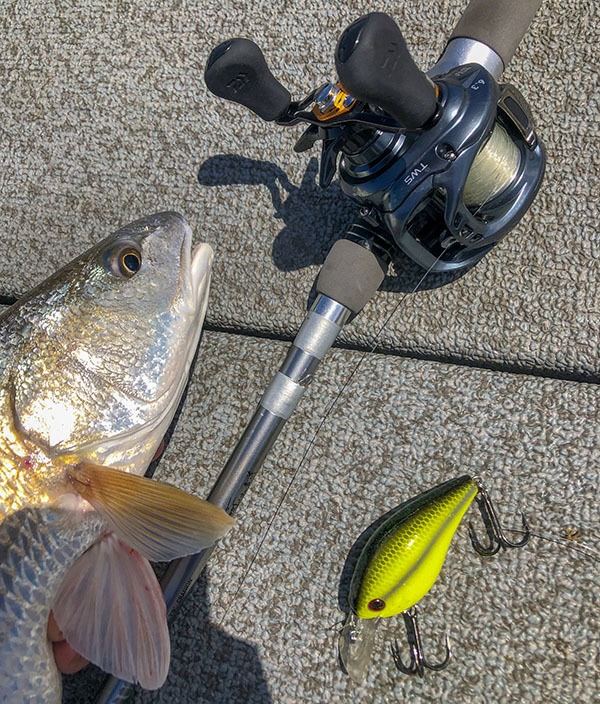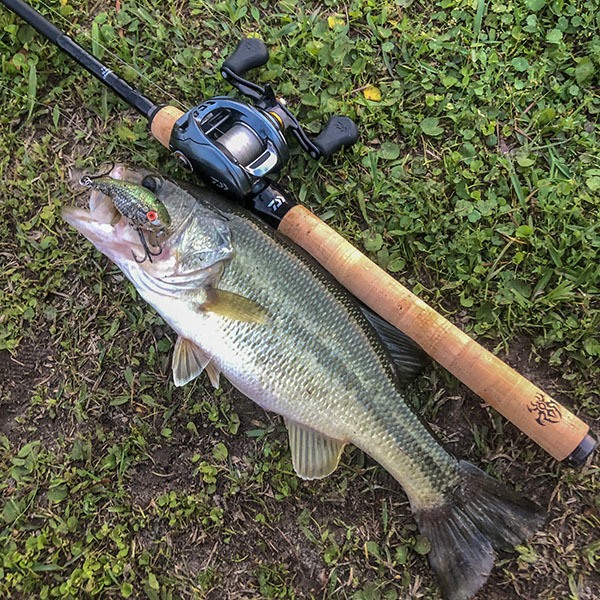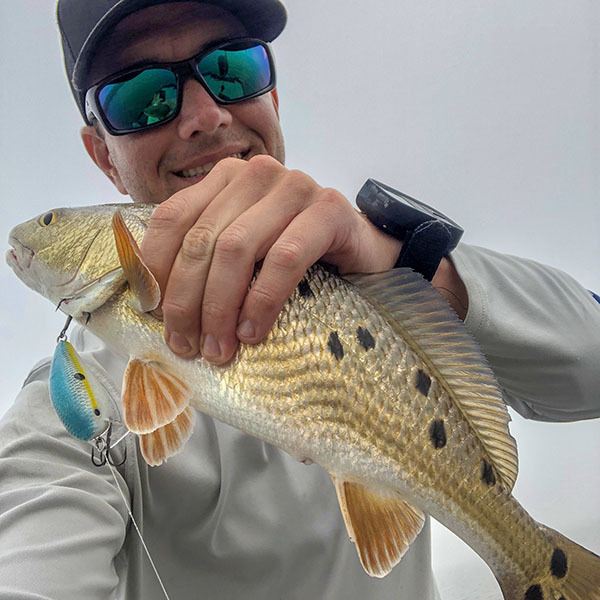Crankbaits are a staple for bass fishing, but have proven their worth catching redfish in Louisiana's marsh. These are reasons you should tie one on.
Anglers pride themselves on being successful with lures no one else uses, probably because it's a way to stand out from the crowd, but also a way to catch fish when conventional tackle fails.
One such lure is a shallow diving crankbait.

In fact, during one fishing trip, tying on a red squarebill is what worked when I observed redfish turning down a Flashy Swimmer and swimmin' craw.
They just preferred that kind of action!
Why Redfish Love Shallow Crankbaits
Here are three really good reasons you need to start throwing a shallow diving crankbait.
Something Different
This is an action redfish rarely see.
They’re used to popping corks, gold spoons and spinnerbaits, but something wig-wagging and bumping into cover is new to most, making them more likely to take notice.
Crankbaits Float
A shallow-diving crankbait will float to the surface when you stop retrieving, making it easier to get unsnagged from tree limbs (“wood in the winter”) or create a different presentation altogether.
Reeling slower causes the crankbait to run shallower and, if you run shallow enough, you’ll create a “waking” effect that grabs the attention of nearby redfish, or a big bass.

Whether in the marsh, a lake, or a humble pond, largemouth bass love the action of a shallow crankbait.
Bass are another reason to keep a shallow crank or two around, especially given their comeback with the "freshening" we've seen on Louisiana's coast.
Easy to Cast
The compact, streamlined shape makes these baits easy to cast a far distance.
Rigs like a popping cork catch a lot of air and are tough to cast far and accurately.
Even spinnerbaits slow down from the drag their blades and skirts create during a cast.
But a little crankbait zings through the air like a rock.
With some being as heavy as a half ounce, you have plenty of weight to load up the rod on each cast.
What rod/reel combo should you use?
As always, when selecting a rod or choosing a casting reel, you must look at the needs to be met:
For these reasons you should consider a rod and reel with these specs:
My favorite rod and reel combination that matches this perfectly is Daiwa's Tatula Glass Cranking Rod (TTU721MHRB-G) and a Tatula 150 or Tatula 100.
I've used a Tatula SV before and it does fine (though its shallow spool is better suited for throwing light baits).
What about fishing line?
I do not use braid because it casts like crap and has no stretch.
It’s good to have some stretch with those treble hooks and when the bill deflects off cover like dock pilings and oysters.
Plus monofilament isn’t as flimsy as braid, not getting tangled on treble hooks, and casts much smoother, especially with a silicon lubricant added.
What are some good shallow crankbaits to try?
I've fished with a few over the years, and suggest you give these a try:
- Mann’s Baby 1 Minus
- H2O Express CRS Squarebill
- H2O Express CRM Squarebill
- H2O Express SCSFW Wakebait
- Worden's Timber Tiger DC2
I really like the H2O Express baits because they're much cheaper, swim just as well as any brand squarebill or wakebait, and come armed with VMC treble hooks that hold up against redfish.

This eating-sized redfish couldn't resist the waking action of a shallow crankbait.
Do you have a favorite bait you enjoy? Share it in the comments below!

Dennis, I appreciate you commenting!
What you’ve asked is a set of very broad questions covering a very wide horizon, so please bear with me here.
First off, I don’t have a “top three”, because there are so many different kinds of rods and reels that can pair with one another, plus so many different kinds of fishing line that there are virtually endless combinations to serve ever niche need of inshore anglers.
I’ll tell you that if I were stuck with one rod for an entire fishing trip for specks or reds, it’d be this one: https://www.lafishblog.com/duce-rods-ecm69-casting-rod-review/
I use casting tackle more than anything these days, so I’d make sure I knew this before selecting a casting reel: https://www.lafishblog.com/how-to-select-a-great-inshore-baitcaster/
This is my favorite jigging combo: https://www.lafishblog.com/winter-jigging-combo-for-speckled-trout/
Hope that helps, thanks Dennis.
What’s your top 3 go to set ups for reds and trout ? Colors ?
Thanks for your support, Cliff!
devin,
always very spot on, vet on s/s will sign up on next check.
cliff duet
So what is the LA FB 201 about? What exactly are you teaching what are you covering? Is it just your fishing trips? Is this just a weekly article of random fishing? Is this targeted to specs and reds only? How are you teaching? What is LA Elite?
Hey David, thanks for commenting!
To answer your questions….
You can have your questions answered about Inshore Fishing 201 here: https://www.lafishblog.com/if201/
And your questions about LAFB Elite can be answered here: https://www.lafishblog.com/join/
Thank you, and don’t hesitate to let me know if I can answer anything else for you.
I’m glad you think so.
Thanks for commenting!
Very informative